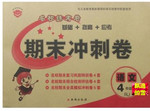��Ŀ����
�ٶ�Ӣ�������ʦҪ��ͬ��֮�佻�������ģ���������ͬ��д���������ġ����й���5������ÿ��������������������漰һ�����ʵ����ӡ�ɾ�����ġ�
���ӣ���ȱ�ʴ���һ��©�ַ��ţ��ģ�������������д���üӵĴʡ�
ɾ�����Ѷ���Ĵ���б�ߣ��ܣ�������
�ģ��ڴ��Ĵ��»�һ���ߣ����ڸô�����д���ĺ�Ĵʡ�
ע�⣺1.ÿ���������ľ�����һ�ʡ�
2.ֻ������5�������ߣ��ӵ�6���𣩲��Ʒ֡�
In August 1996, Peter Hessler, an American teacher of English, arrive in the town of Fulig on the Yangtze River. He and a colleague were to spend two years there teach English at a teacher training college. They were the only foreigner in the town. The first semester finished and they had four weeks off. Though they could to anywhere they wished, but they deiced to tak a boat downstream. They finalllyl had a wonderful trip the Three Gorges.
 ��У��������ĩ��̾�ϵ�д�
��У��������ĩ��̾�ϵ�д�Here are Travelbag, we��ve seen the world---we want you t o as well. To help you on your way, we��ve put the World on Sale. The offers you see below are just a taste of the great deals we have available. To find out more, call us on 0800 804 8911 and let our experts make your perfect trip, at the perfect price. Book by: 30 Apr.
Middle East & Indian Ocean | |
Dubai was £349 now £299 Includes fligths 3nts.4* Coral Oriental (B&B) Valid(��Ч��):01 Sep----30 Sep | Mauritius was £1,085 now £835 Includes flights 7nts,3+*Le Tropical (AI), Mauritius Valid: 01 May---22 Jun |
Far East | |
Thailand Beach (Cha Am) was £700 now £575 Includes flights 10nts, 3* Holiday Inn Regent Beach, Cha Am 5 FREE nts included in price Valid: 01 Sep---31 Oct. | Malaysia, Langkawi was £689 now £599 Includes fliglhts 7nts, 3* Mutiara Burau Bay Beach Resort, Langkawi Valid: 01 May---31 May. |
Australiasia | |
New Zealand was £1,059 now £989 Self-drive, 5-day car hire 2nts, 3* Best Western President, Auckland, Scenic Wonders Self-drive Valid: 05 Apr---13 Jun | Sydney was £1,049 now £979 Includes fligths 3nts, 3* Quality Inn Cambridge 2nts, 3* York Gardens Resort 2nts, 2 * Comfort Inn, Cessnoc Valid: 15 Apr.----15 Jun. |
Americas | |
Rio was £799 now £649 includes flights 7nts, 3* Golden Tulip Continental (B&B), Rio | Las Vagas was £540 now £485 Includes flights 5nts, 3* Circus Circus, Las Vagas Valid: 01 May---30 Jun. |
1.The underlined words in the first offer most probably mean ______________.
A. 3 nights at 4 stars B. 3 nights and 4 days
C. 3 or 4 places D. $3.4
2.In which of the following places may you have to change your hotel?
A. Rio B. Mauritius
C. Sydney D. Malaysia, Langkawi
3.If you want to enjoy the scenery along the driving way, you can visit_________.
A. Dubai B. Thailand Beach(Cha Am)
C. Las Vagas D. New Zealand
4.It can be inferred from the text that ___________.
A. the ad is intended for foreign travelers
B. the offer to Rio has the longest valid time
C. the booking service will last until the end of May
D. taking planes is the only way to go to those places
5.The writer��s purpose of writing this article is to __________.
A. have more people to buy from Travelbag
B. compare travel costs in different countries
C. teach tourist how to save more money
D. inform tourists of some places of interest


 re urging kids to work harder by offering them obvious encouragements.Happy Meals are at the low end of the scale.With the help of businesses, schools are also giving away cars,iPods,seats to basketball games,and��in a growing number of cases��cold,hard cash.The appeal of such programs is obvious,but the consequences of tying grades to goods are still uncertain.It��s been a common tradition in middle-class families to reward top grades with cash as a way to teach that success in school leads to success in life.But for many disadvantaged minority children,the long-term benefits of getting an education are not so clear,according to experts.
re urging kids to work harder by offering them obvious encouragements.Happy Meals are at the low end of the scale.With the help of businesses, schools are also giving away cars,iPods,seats to basketball games,and��in a growing number of cases��cold,hard cash.The appeal of such programs is obvious,but the consequences of tying grades to goods are still uncertain.It��s been a common tradition in middle-class families to reward top grades with cash as a way to teach that success in school leads to success in life.But for many disadvantaged minority children,the long-term benefits of getting an education are not so clear,according to experts.